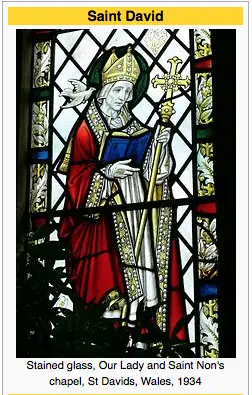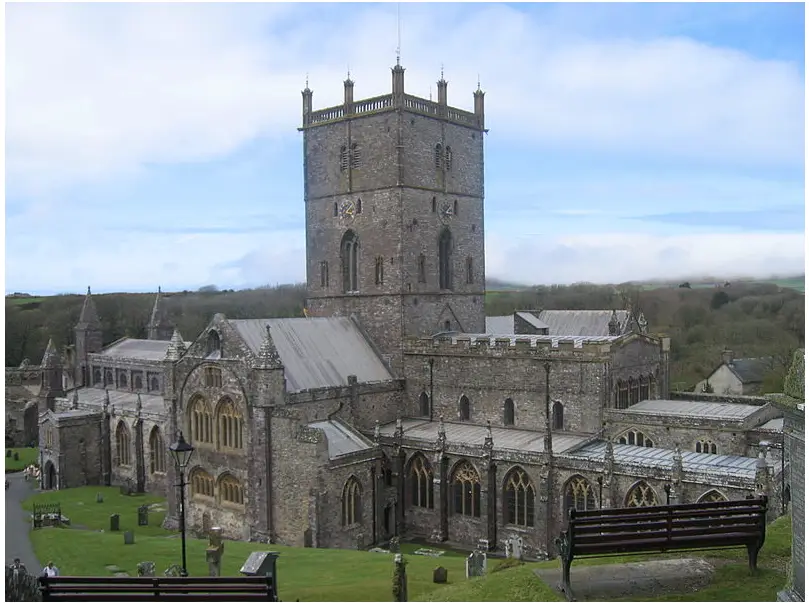St. David: Enigma, legend, stories
 As records of his life are somewhat questionable, St. David is a bit of an enigma. It is believed that he was born around 500 to Non, his mother, and Sant, his father, and that he was the grandson of a king. He lived in Pembrokeshire and was educated in a monastery by a blind monk. He became a well-regarded teacher and monk himself, and some accounts claim that he eventually became an archbishop.
As records of his life are somewhat questionable, St. David is a bit of an enigma. It is believed that he was born around 500 to Non, his mother, and Sant, his father, and that he was the grandson of a king. He lived in Pembrokeshire and was educated in a monastery by a blind monk. He became a well-regarded teacher and monk himself, and some accounts claim that he eventually became an archbishop.
A missionary, he founded many churches and a monastery in Wales currently known as the Cathedral of St. David. He and his monks were renowned for their austerity and simplicity. They worked in silence without the assistance of labor animals, and ate only bread, water, herbs, and vegetables.
The miracle that is most associated with St. David asserts that he was speaking to a large crowd in Ceredigion, Wales, and the people were having trouble hearing him. The ground rose up under him to form a small hill, and a small white dove settled on his shoulder. The people could then hear his words. Even today, St. David is often depicted in art imagery with a white dove on his shoulder.
Legend also has it that St. David helped the Welsh army defeat Saxon invaders by recommending that they place leek plants in their helmets, so that the Welsh soldiers could better distinguish their own brothers in arms from the similarly clothed Saxons.

St. David’s Cathedral, Wales, United Kingdom
It is believed that St. David died on March 1 sometime in the late 6th century (most accounts say either 589 or 601). His last words to his followers were, “Be joyful, brothers and sisters. Keep your faith, and do the little things that you have seen and heard with me.”
The Feast of St. David, also known as St. David’s Day, is now celebrated on or around March 1 each year. In Wales, citizens celebrate with multi-day parades, concerts, and food festivals. At St. David’s on-the-Hill, parishioners have worn daffodils to represent leeks and shared leek quiches to honor the patron saint.

Detail from the window honoring our patron saint at St. David’s on-the-Hill.
The quote is from St. Paul’s letter to the Ephesians 6:13, and may refer to the fact that three tribes — the Angles, the Saxons, and the Jutes — were all initially pagans when they invaded Britain during St. David’s time.
Another part of the window states “He shall build a house in my name,” honoring St. David’s work to establish many churches in England.
St. David’s window is located in the passageway from the sanctuary to the lower hall.
Graphics and research provided by Glen Birk.